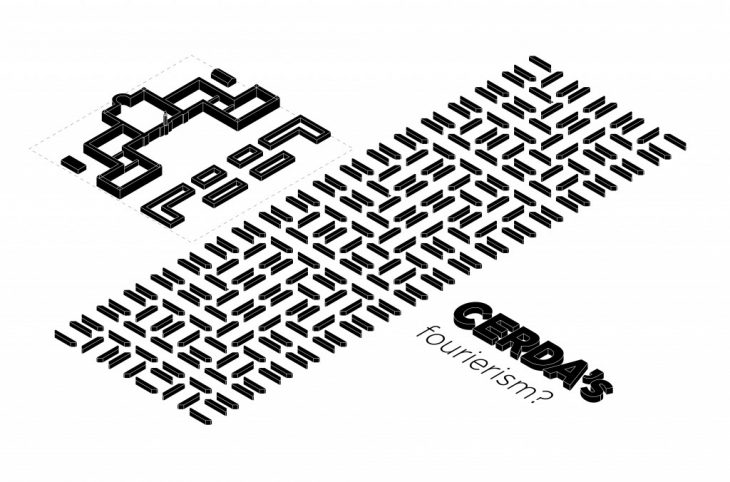
Apparently no connections link the work of Ildefons Cerdà for the new Barcelona in 1850s with the utopian socialist theory of french Charles Fourier from the early 1800s, but what if the missing link relies exactly in the no similarity of the two?
This research aims to analyse the theory behind the Phalanstery by rendering its utopian imagery into reality and comparing its features to the first drawings of Ildefons Cerdà for the expansion of Barcelona.
While observing the failure of Fourier in funding his idea in Napoleon’s France we tried to mark the experience of disciples that, mostly in the US, built communities following his notions and rules in order to see if any example of Phalanstery has ever been successful. Thus, failing again and again, we wondered if the naivety of the architectural rules were the main issue of Fourier’s communities while stating that the project of Cerdà by taking a completely new approach to the system was indeed successful.
Cerda’s fourierism? is a project of IaaC, Institute for Advanced Architecture of Catalonia developed at Master in City and Technology, in 2016 by:
Faculty: Vicente Guallart
Tutors: Marta Milà and Andre Resende
Student: Iacopo Neri